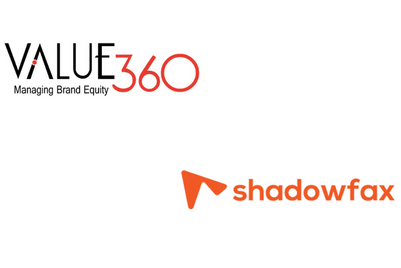In the world of business, effective communication is the linchpin that holds everything together. It is the key to building trust, fostering relationships, and ultimately, driving success. While this holds for businesses operating in any market, it becomes especially critical when dealing with tier two and tier three markets. Often located in smaller towns and rural areas, these markets are a goldmine of untapped potential for businesses looking to expand their reach.
According to a report by RedSeer, by 2030, India's e-commerce market will be the third-largest by scale, and the annual gross merchandise value (GMV) will reach USD 300 billion from USD 55 billion in 2021. A significant driver of this growth will be the tier two and tier three cities, which are expected to contribute 50% of the total e-commerce GMV by 2030, up from 32% in 2020. These figures amply reflect the growing consumer market in these geographies, with increasing purchasing power, internet penetration, digital literacy, and aspiration.
Understanding the landscape
Before diving into communication strategies, it's imperative to understand the nuances of tier two and tier three markets. Characterised by unique challenges and opportunities that necessitate a tailored approach to communication, these markets differ significantly from their tier one counterparts in several ways:
-
Diverse demographics: Tier two and tier three markets often comprise a heterogeneous mix of cultures, languages, and socio-economic backgrounds, with different values, beliefs, preferences, and behaviours across regions. PR leaders must be cognizant of this diversity when crafting communication strategies.
-
Language barriers: India has 22 official languages and hundreds of dialects. Despite being largely considered the lingua franca, English is not widely spoken or understood in tier two and tier three cities. Therefore, businesses need to communicate with their customers in their local languages and dialects, using multilingual interfaces, content, and customer support.
-
Lower media penetration: Access to traditional and digital media might be limited in these markets. Hence, relying solely on conventional communication channels may not yield the desired results.
-
Relationship-centricity: Tier two and tier three customers are often sceptical about online shopping, due to a lack of awareness, trust issues, or fear of fraud, which is why personal relationships and trust play a crucial role in these markets. Word-of-mouth recommendations and community influence are powerful tools for PR professionals.
Strategies for effective communication
To overcome these challenges and tap into the huge potential of tier two and tier three markets in India, communication professionals need to adopt effective strategies that can help them reach, engage, and retain their customers. Some ways to achieve this goal are:
-
Harness the power of local influencers: Influencer marketing is a powerful way to connect with customers in tier two and tier three cities. Local influencers have a strong rapport with their followers and can influence their purchase decisions. Identifying and collaborating with local influencers can amplify communication by lending authenticity to the brand. Collaborate with local influencers who share the brand values and vision, and leverage their platforms to showcase their products or services, generate awareness, create buzz, and drive conversions.
-
Leverage social media: Social media is a popular medium for communication and entertainment in tier two and tier three cities. While media penetration might be lower, the adoption of smartphones is on the rise even in tier two and tier three markets. According to a report by Kantar, social media users in these cities spend an average of 2.8 hours per day on various platforms such as Facebook, WhatsApp, Instagram, YouTube, etc. Invest in digital platforms that have a wider reach, such as WhatsApp, Facebook, or regional social media platforms. These channels can be used to interact with the target audience directly, create engaging content that resonates with their interests and needs, and encourage user-generated content that showcases their brand advocacy.
-
Craft compelling stories through localization: Tailor your messaging to resonate with the local culture and preferences. This means using local languages, dialects, and idioms, addressing local pain points, and highlighting local benefits. Various formats such as videos, podcasts, blogs, webinars, etc., can be used to craft compelling stories that highlight the positive impact your business has on the lives of people in these markets. Stories have the power to connect on an emotional level, transcending barriers.
-
Educate and empower: Many tier two and tier three markets may not be fully aware of the products or services you offer. Communication can be used as a tool to educate and empower their customers in tier two and tier three cities. They can provide useful information about their products or services, such as features, benefits, usage, safety, etc., to help them make informed decisions. They can also provide tips, guides, tutorials, FAQs, etc., to help them overcome any doubts or difficulties they may face while using their products or services.
-
Community engagement: Engage actively with the local community. Sponsor or participate in local events, charities, or festivals. Show that your business is not just there to make a profit but also to contribute positively to the community.
Measuring success
Measuring the success of communication efforts in tier two and tier three markets requires a nuanced approach. Metrics like brand awareness, engagement on digital platforms, and sales in specific regions are important. However, the qualitative aspects of trust-building and community integration should not be underestimated. Conduct regular surveys and seek feedback to gauge the sentiment and perception of your brand within these markets.
It is also important to note that building trust takes time, especially in tier two and tier three markets, and hence consistency in communication and delivering on promises are critical. Adaptability also plays a crucial role, so be prepared to pivot your communication strategy based on real-time feedback. These markets are dynamic, and what works today might not work tomorrow. Flexibility is key.
To sum up
Cracking the code of effective communication in tier two and tier three markets is a challenging yet rewarding endeavour for businesses. Brands and communication professionals who understand the unique dynamics of these markets and employ tailored strategies can unlock immense growth potential. Remember that communication is not just about delivering a message; it's about building relationships and trust within communities that can become loyal customers and advocates for your brand. Instead of a one-time activity, communication is a continuous process that requires constant monitoring, evaluation, and improvement. Brands that communicate effectively with their customers in Tier 2 and Tier 3 cities can build long-term relationships, increase customer loyalty, enhance brand reputation, and achieve business growth and success.
The author is founder and director, Value 360 Communications.



.jpg&h=334&w=500&q=100&v=20250320&c=1)
.jpg&h=334&w=500&q=100&v=20250320&c=1)
.jpg&h=334&w=500&q=100&v=20250320&c=1)




.jpg&h=334&w=500&q=100&v=20250320&c=1)



.png&h=268&w=401&q=100&v=20250320&c=1)

.png&h=268&w=401&q=100&v=20250320&c=1)

.jpg&h=268&w=401&q=100&v=20250320&c=1)


